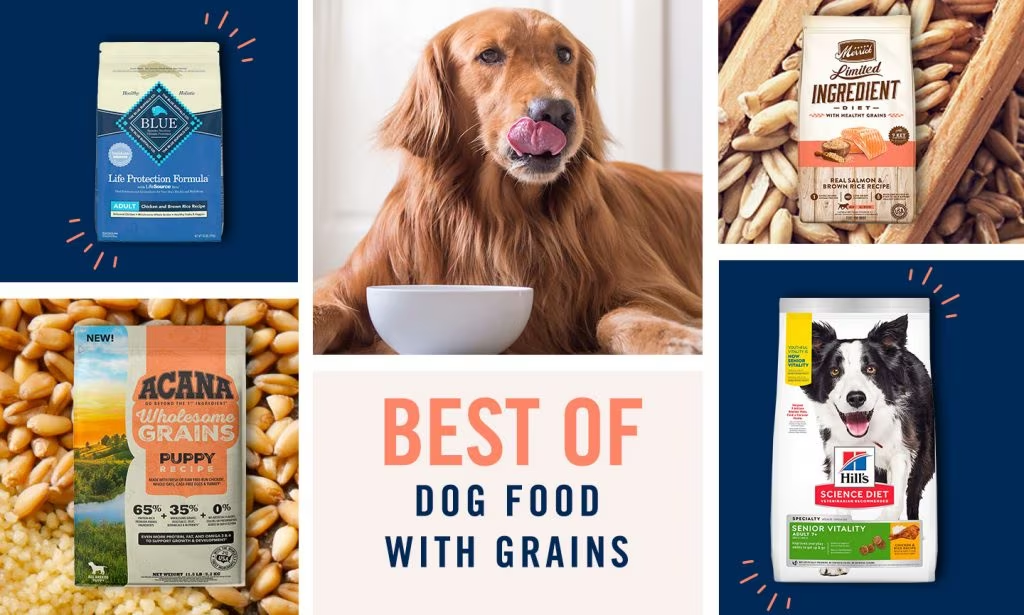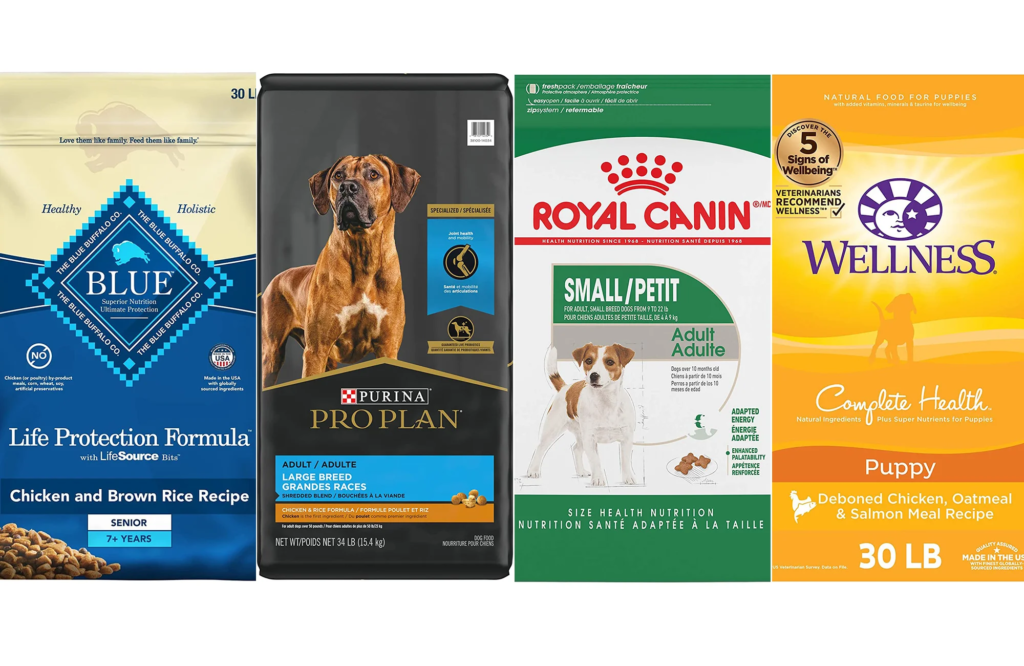Introduction
As responsible dog owners, providing the best care for our furry friends is paramount, and nutrition is a cornerstone of their overall well-being. The right dog food can have a profound impact on your pet’s health and happiness. With an overwhelming array of options available, selecting the best dog food can be a daunting task. In this comprehensive guide, we’ll delve into the factors that influence the choice of the best dog food, including your dog’s specific dietary requirements, ingredient quality, and the different types of dog food on the market. We’ll also focus on making this content SEO-friendly, ensuring it reaches and assists as many dog owners as possible.

I. Understanding Your Canine’s Dietary Needs
To make an informed choice when selecting the best dog food, you must first understand your dog’s unique dietary requirements. Dogs, like humans, have specific nutritional needs that vary depending on factors such as their age, size, breed, and activity level. Here are some key considerations, tailored for SEO optimization:
A. Age-Specific Requirements
Puppies require higher protein and calorie intake for growth.
Adult dogs have different nutritional needs, and it’s crucial to choose the right food for their stage of life.
Senior dogs may require diets lower in calories and fat, focusing on joint health and overall well-being.
B. Size Matters
Small, medium, and large breed dogs have distinct nutritional requirements.
Large breeds often need diets that support joint health.
Small breeds may require smaller kibble sizes for ease of consumption.
C. Activity Level and Breed
Active dogs, such as working or sporting breeds, require diets rich in calories and protein.
Less active dogs may need lower-calorie options.
Some breeds are predisposed to specific health concerns, which should inform your dietary choices.
D. Allergies and Sensitivities
Some dogs have food allergies or sensitivities, necessitating specialized diets.
Mention common food allergens like grains, poultry, or beef, and how to identify and manage these allergies.
II. The Significance of Ingredients
The quality of ingredients in your dog’s food significantly impacts their health. To make this section SEO-friendly, focus on keyword optimization:
A. Protein Source
To made the Best Dog Food Emphasize the importance of high-quality animal protein sources, like chicken, beef, fish, and lamb.
Highlight the need to avoid vague terms like “meat meal.”
B. Carbohydrates
Discuss the role of carbohydrates in a dog’s diet.
Promote whole grains and vegetables as healthier carbohydrate sources.
Mention common filler ingredients like corn and wheat.
C. Fats
Explain the significance of healthy fats in a dog’s diet for skin, coat, and overall well-being.
Promote fats from sources like chicken fat and fish oil.
D. Artificial Additives
Discuss the risks of artificial preservatives, colors, and flavors in dog food.
Encourage the use of natural alternatives.
E. Grains vs. Grain-Free
Provide an overview of the ongoing debate around grain-free diets.
Suggest consulting with a veterinarian before choosing a grain-free diet.
III. Types of Dog Food
There are various types of dog food available, each with its advantages and disadvantages. SEO optimization in this section should include keywords for search engine visibility:
A. Dry Kibble
Describe the convenience and cost-effectiveness of dry dog food.
Emphasize the importance of high protein content and whole ingredients.
B. Canned Food
Highlight the suitability of canned dog food for Best dog food with dental issues or those needing extra moisture.
Mention that it often contains fewer fillers and is more palatable.
C. Semi-Moist Food
Explain the convenience of semi-moist food in single-serving packages.
Note that it may contain more artificial additives.
D. Homemade and Raw Diets
Discuss the trend of homemade and raw diets for dogs.
Stress the need for careful planning and consultation with a veterinarian or canine nutritionist.
IV. Special Diets and Dietary Considerations
Some dogs may require special diets due to health issues or dietary sensitivities. Optimize this section for SEO by using relevant keywords:
A. Grain-Free Diets
Explain that grain-free diets may benefit dogs with allergies but come with certain concerns.
Mention the ongoing debate on the link between grain-free diets and heart disease in specific breeds.
B. Limited Ingredient Diets
Describe limited ingredient diets, suitable for dogs with food sensitivities.
Highlight their simplicity and suitability for sensitive dogs.
C. Prescription Diets
Discuss the role of prescription diets in managing specific health conditions like kidney disease, diabetes, or allergies.
Emphasize the importance of a veterinarian’s guidance.
D. Weight Management Diets
Explain the need for weight management diets for overweight dogs.
Promote their safety and effectiveness in helping dogs shed excess pounds.
V. Deciphering Labels and Selecting Brands
Understanding labels and choosing reputable brands is vital in ensuring your dog’s well-being. Optimize this section for SEO:
A. AAFCO Statement
Explain the significance of the Association of American Feed Control Officials (AAFCO) statement on dog food labels.
Stress the importance of choosing food that meets AAFCO standards for your dog’s life stage.
B. Guaranteed Analysis
Describe the guaranteed analysis section, which provides essential information on protein, fat, fiber, and moisture levels in dog food.
Explain how to interpret this data to make informed choices.
C. Ingredients List
Guide readers on how to review the ingredients list, emphasizing the importance of high-quality proteins and whole ingredients near the top.
Encourage the avoidance of ambiguous or low-quality ingredients.
D. Selecting a Reputable Brand
Discuss the criteria for choosing a reputable dog food brand.
Suggest looking for brands with a history of research, high-quality manufacturing practices, and ethical ingredient sourcing.
VI. Transitioning to a New Diet
Transitioning to a new dog food should be done gradually to prevent digestive upset. Optimize this section for SEO:
A. Gradual Transition
Explain the importance of slowly transitioning to a new diet over 7-10 days.
Highlight the need to mix the new food with the old food in increasing proportions.
VII. Regular Veterinary Check-ups
Emphasize the importance of regular veterinary check-ups for your dog’s health and well-being. Optimize for SEO:
A. Ongoing Veterinary Care
Stress the significance of consulting a veterinarian for guidance on your dog’s specific dietary needs.
Encourage routine check-ups to monitor your dog’s health and address any concerns promptly.

Conclusion
Selecting the best dog food is a crucial decision for every dog owner. It requires a deep understanding of your dog’s unique dietary requirements, the quality of ingredients, and the types of dog food available. By considering these factors, conducting SEO research, and consulting with your veterinarian, you can ensure that your furry companion receives the nutrition necessary to thrive and lead a healthy, joyful life. Remember that the best dog food is one that meets your dog’s specific needs, aligns with your lifestyle and budget, and promotes optimal nutrition and well-being.
